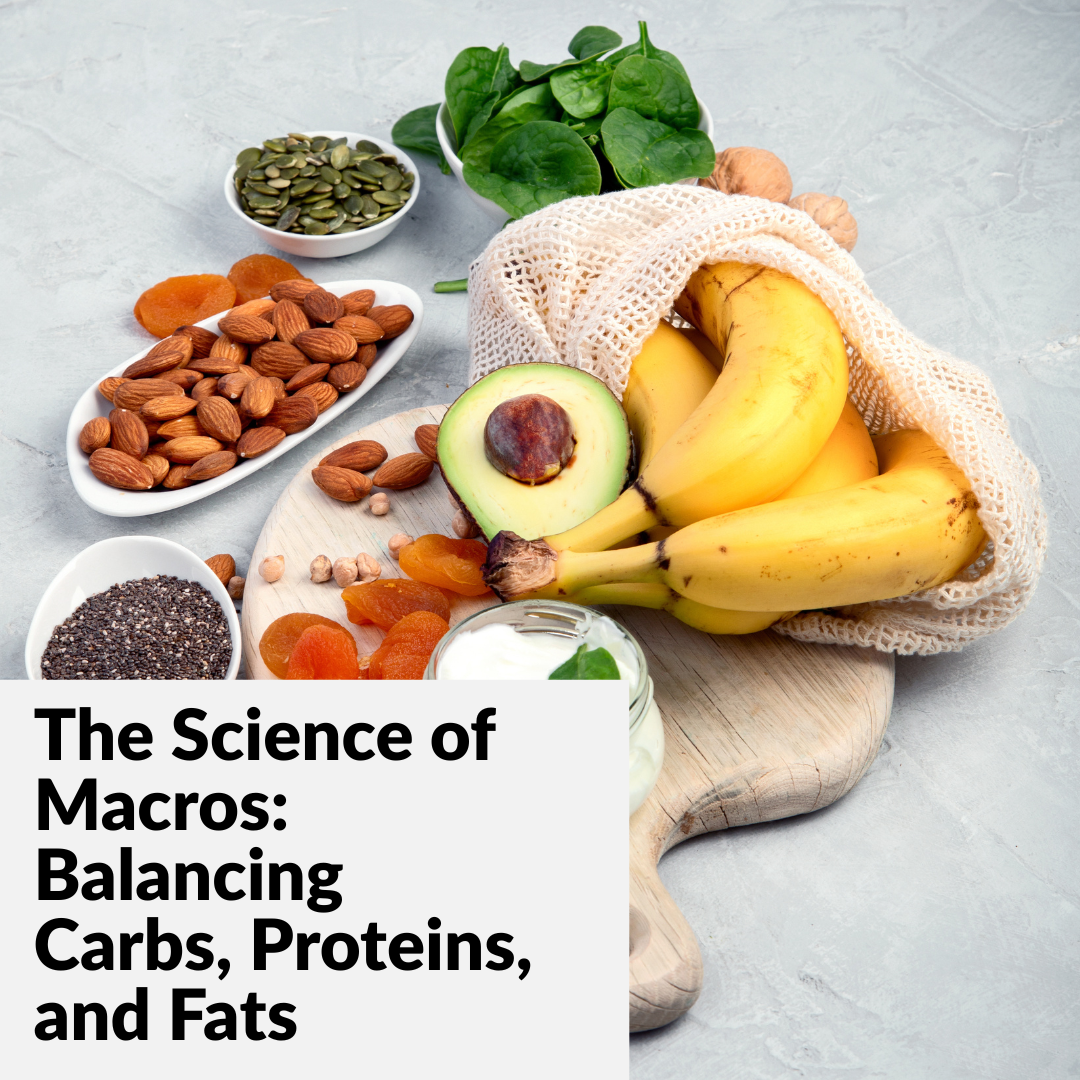
If you’ve ever tracked your food or worked with a coach, you’ve probably heard the term macros tossed around. But what exactly are they, and how do they impact your health, energy, and fitness goals?
Let’s break down the science of macronutrients (aka “macros”)—what they are, why they matter, and how to personalize them to work for your body and goals.
What Are Macros?
Macronutrients are the three major nutrients your body needs in large amounts for energy, function, and repair:
1. Carbohydrates (4 calories per gram)
Carbs are your body’s preferred source of energy—especially during workouts. When you eat carbs, your body breaks them down into glucose, which is used for immediate fuel or stored in your muscles and liver for later.
Best sources: fruits, vegetables, whole grains, legumes, oats, rice, potatoes, and yes—some simple carbs post-workout.
Why they matter:
-
Fuel for brain and body
-
Support intense training
-
Aid in recovery when paired with protein
2. Proteins (4 calories per gram)
Protein is the building block of muscle, hormones, enzymes, and basically every cell in your body. It’s essential for recovery, fat loss, and lean muscle growth.
Best sources: lean meats, eggs, dairy, tofu, legumes, protein powder, fish, and tempeh.
Why they matter:
-
Build and repair muscle tissue
-
Increase satiety (keeps you fuller longer)
-
Support immune function and hormone production
3. Fats (9 calories per gram)
Fats often get a bad rap, but they’re crucial for hormone health, brain function, joint support, and nutrient absorption (think vitamins A, D, E, and K).
Best sources: avocados, olive oil, nuts, seeds, fatty fish, and nut butters.
Why they matter:
-
Balance hormones (especially important for women over 35)
-
Support cognitive function
-
Provide long-lasting energy
Why Balancing Macros Matters
Tracking calories can help with weight goals, but understanding macros takes it a step further. When your macros are aligned with your body’s needs, you’ll notice:
-
More stable energy throughout the day
-
Improved workout performance
-
Easier fat loss or muscle gain
-
Better recovery and reduced cravings
It’s not just about how much you eat—it’s about what you’re eating and how those nutrients work together.
Personalizing Your Macro Ratios
There’s no one-size-fits-all approach. Your ideal macro breakdown depends on your:
-
Body composition goals (fat loss, muscle gain, maintenance)
-
Activity level
-
Age and metabolism
-
Hormonal health and lifestyle
A few sample macro ratio starting points:
| Goal | Carbs | Protein | Fat |
|---|---|---|---|
| Fat Loss | 30-40% | 30-35% | 25-30% |
| Muscle Gain | 40-50% | 25-30% | 20-25% |
| Maintenance | 35-45% | 25-30% | 25-30% |
| Low Carb/Metabolic Reset | 20-30% | 30-40% | 30-40% |
How to Start Tracking Macros
-
Use a food tracker app (MyFitnessPal, Cronometer, MacrosFirst, etc.)
-
Calculate your total daily calorie needs (you can use online calculators or work with a coach)
-
Break your calories down into macros based on your goals
-
Track consistently and adjust as needed—your body is dynamic, not static!
Macros are more than just numbers—they’re fuel for your life. Whether you’re training hard, managing energy as a busy mom, or trying to feel better in your skin, understanding your macro balance can make a huge difference.
Don’t stress about perfection. Start with awareness, stay consistent, and adjust based on how you feel, perform, and recover.
You’ve got this—and your body will thank you.
Leave a Comment
You must be logged in to post a comment.
0 Comments